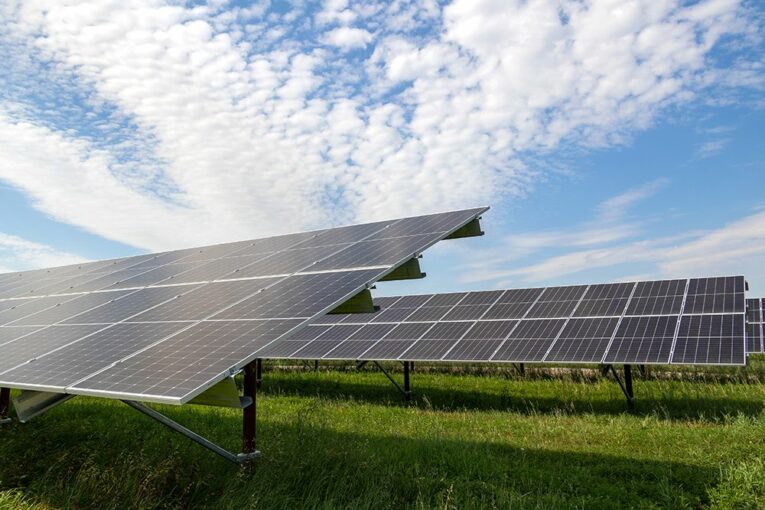
Citing possible negative effects on bird populations, the Alberta Utilities Commission has turned down a massive 1,500-acre solar farm proposed for a site near High River.
While noting that the Foothills Solar Project would reduce greenhouse gas emissions and bring economic benefits, including to its First Nations investors, the commission concluded the risks posed by the solar panels to birds in a prominent conservation area were too significant.
The commission was satisfied measures could be taken to address bird collisions with power lines, it said there are shortfalls in plans to reduce the dangers posed by the photovoltaic infrastructure.
“The commission found that approval of the project could result in some positive socioeconomic benefits for Cold Lake First Nations and a commensurate potential to facilitate reconciliation between the Crown and Cold Lake First Nations,” stated the AUC in its decision released on Thursday.
“However, the potential for the project to result in high bird mortalities, and the impacts of the project on the Frank Lake IBA and the social and environmental values that it represents are unacceptable.”
Foothills Solar, a subsidiary of Vancouver-based Elemental Energy Renewables, had proposed the facility for a site east of High River that would host 435,000 ground-mounted photovoltaic panels along with inverter/transformer stations and access roads, in a project that would produce 150 MW of electrical power.
Construction was to begin this summer on a site with a total footprint of 1,500 acres — up to 300 acres containing solar panels — and go online at the end of 2024.
Opponents — including environmentalists, naturalists, Foothills County and concerned citizens — argued the solar panels were located too close to the Frank Lake wetland area, which they say is an important habitat for 256 bird species — 60 of them at risk.
An environmental assessment done by a firm hired by Foothills Solar concluded those risks could be reduced to a satisfactory level.
“The environmental evaluation concluded that the overall residual effects of the project are not predicted to be significant, and that the potential adverse effects associated with the project can be mitigated with standard mitigation measures, industry best management practices and site- and species-specific mitigation,” stated the AUC in its decision.
Recommended from Editorial
-

Varcoe: Alberta sees flood of renewable projects with more growth to come
-

Medicine Hat pulls plug on money-losing $13M solar power project
-

TC Energy to build its first solar energy project in Canada
-

Vulcan solar farm — Canada’s largest — receives key $500-million investment
But, ultimately, the regulator agreed with critics, saying the solar farm was a threat to wildlife.
“Given the proximity of the Foothills Solar Project to the Frank Lake Important Bird Area, (its) significance to migratory birds and breeding water birds, the abundance and diversity of birds and water birds at risk in the area . . . and existing direct and indirect negative impacts, the commission finds that there is a reasonable risk for the project to cause significant adverse environmental impacts.”
The AUC panel noted Elemental Energy was committed to a wildlife monitoring program at the site, which could provide a better understanding of the effect of such facilities on bird populations.
But it concluded that “while the commission does wish to further understand the risk that solar projects pose to birds, the immediate concern for the Foothills Solar Project is the potential for unacceptable levels of bird mortality to occur.”
It also noted project partner Cold Lake First Nations isn’t a member of Treaty 7 where the project would be located, and hadn’t participated in hearings attended by critical interveners.
While it welcomes renewable energy projects, the Alberta Wilderness Association applauded the AUC’s decision, saying such developments must be properly located.
“Frank Lake is internationally recognized for its significance to nesting and migrating birds,” Ruiping Luo, AWA Conservation Specialist, said in a statement.
“Development in this region poses a huge risk to the bird and wildlife populations that frequent the lake and surrounding area.”
According to its website, Elemental Energy already operates four solar farms in southern and central Alberta with generation totalling 84 megawatts of electrical generation.
A company spokesman said Elemental hasn’t given up on the Foothills Solar Project.
“While we are disappointed in the decision, we are continuing to work with our project partners Cold Lake First Nations and other stakeholders to review the AUC decision and identify opportunities to move the Foothills Solar Project forward,” Daniel Eaton said in an email.
“Elemental Energy is in the business of building renewable energy projects that benefit our environment, our communities, our partners, and our future generations.”
Its Foothills Solar Project is just one renewable energy-generating proposal in Alberta that has come under fire from critics voicing concern over potential effects on wildlife and quality of life.
Critics also say they’re opposed to wind and solar farms’ intrusion on agricultural land.
A so-called biodigester proposed for a site just west of High River that would turn livestock and produce waste into renewable natural gas has run up against concerted local opposition, whose concerns include odours and its effect on property values.
Proposed wind farms northeast of Edmonton, including one from Elemental Energy, have drawn resistance from local residents who are worried over wind turbines’ effects on animal and human health.
The company says its proposed 75 MW wind project planned for near Elk Point, 220 kilometres northeast of Edmonton, will “bring in significant local investment, jobs and new clean electricity to this area of Alberta.”
Twitter: @BillKaufmannjrn
You can read more of the news on source
